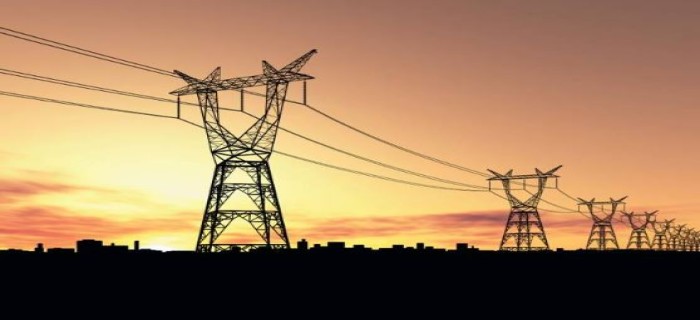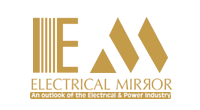
Transmission Lines:Corrosion Phenomenon on Transmission Lines & its mitigation measures.
15 Apr 2025
India’s power sector has undergone significant changes in recent years, driven by various policy initiatives aimed at promoting competition, improving efficiency, and increasing the share of renewable energy sources in the country’s energy mix, , In line with this tremendous increase in the transmission network and Construct & maintain this lines on various environment is one of the Challenge faced by Power Utility.
ABSTRACT
India’s power sector has undergone significant changes in recent years, driven by various policy initiatives aimed at promoting competition, improving efficiency, and increasing the share of renewable energy sources in the country’s energy mix, In line with this tremendous increase in the transmission network and Construct & maintain this lines on various environment is one of the Challenge faced by Power Utility. The Transmission towers are erected in the mountains and fields, exposed to environment, harsh condition such as sunlight, rain wash, weed cover, sewage immersion ,acid rain erosion, biological erosion humid air corrosion. Metal corrosion refers to the damage or deterioration caused by chemical or electrochemical interactions between metallic materials and the environment. Corrosion is a crucial issue across various industries, particularly affecting transmission line engineering in complex environments. The corrosion of transmission towers, predominantly constructed of steel, poses a serious threat to their safe and stable operation. This damage results in thickness and effective cross-section loss, weakening the mechanical properties and reducing the bearing capacity of the towers. Corroded members are highly prone to fatigue fracture and brittle failure under environmental loads such as wind. Overhead ground wires, often made of steel strands, also face corrosion issues, leading to broken strands or disconnections, significantly impacting safety, durability, and service life. In severe cases, corrosion can cause safety accidents, resulting in substantial economic losses and secondary disasters. Corrosion is a chemical process that destroys materials, while erosion is a physical process that moves material from a surface. This paper describes and discuss the probable causes of Erosion at tower base foundation/Tower legs and probable cause of rusting and various mitigation measures taken against the rusting of transmission tower by applying the special anticorrosive paint/Coatings.
2.0 Causes for Rusting /Corrosion on Transmission Lines.
• The rusting causes due to poor galvanizing of material.
• Due to deposit of dust on the roadside, cement pollution near cement factories, Brick Kiln, Chemical industries Steel Plant etc. tower super structure and other tower line materials. (Like hardware fittings, Porcelain insulators & Conductor).
• Heavy water logging area, Heavy growth of grass and bushes, collection of chemical active soil, collection, honeycombing during concreting of stub causing exposure to chemicals present in sub soil.
• Erosion & Rusting occurs due to diverted flow of rain water /Flash floods, Due to river, sea belt, canal, nallah, adjacent to the tower and Natural erosion of soil due to rain water, Excavation work carried out by farmers near tower.
• The corrosion of the tower foot of the transmission line mainly refers to the physical and chemical reaction of metal between the steel of tower foot and its natural atmospheric environment due to metrological or environmental factors, which leads to deterioration and corrosion damage. The corrosion of transmission line towers occurred due to acid rain as well as in coastal areas.
• The electrochemical corrosion is the main cause of tower foot corrosion which leads to tower fall /collapsed.
• Chemical reactions, such as oxidation, cause corrosion. Corrosive agents include
• oxygen and sulfates & Physical forces, such as water, wind, gravity, ice, and temperature changes, cause erosion
3.0 Measures to protect the Corrosion /Rusting of Transmission Tower by using special anticorrosive paint.
The galvanized coating protects the tower material from corrosion due to various pollutants present in air. The reduction/erosion of coating may lead to further corrosion and reduction in original dimensions of tower member/s thus reducing the load bearing capacity of the member/s and may leads to failure of tower.The rust accumulated on the tower parts due to industrial pollution & acid rain. The thickness of coating is to be measured with the use of Elcometer and condition of the tower parts need to be analyzed. In some places the old tower members will be replaced with new members which shall be decided judiciously. Coating thickness shall be measured periodically and prompt action shall be taken to protect the tower/structure from corrosion by applying anti corrosive painting. The various measure is mentioned below: -
• Painting of the Rusted Tower parts:- Due to heavy pollution in the area, the tower members including the leg members also get severely rusted and corroded causing concern for structure strength. Therefore, Zinc rich paint and anti-pollution paint with necessary primer coat have been provided as preventative measures, The detail procedure is given below: -
ii)Stub Encasement: - Due to the submergence, the stubs of these towers are getting rusted for which corrosion has takes place.Therefor, for permanent eradication of this problem, the solution of stub encasement by raising the chimney heights by providing RCC Nominal Mix(1:1.5:3) up to various heights(0.5,1, &1.5 meter) as per the water level provided. The special anticorrosive paint & bitumen paint to be provided.
• Stub Strengthening: -The patrolling team will identify the stub condition & Tower leg condition .Stub strengthening is nothing but a process of rectification of corroded tower stubs by using efficient chemical compound. Strengthening of stubs is done to avoid possibility of tower collapsing and ensures long and healthy life for the tower lines. The rusted stubs should be taken with specific procedure of Stub strengthening with application of the special MRF paint/Coating system.
• Use of epoxy coated steel for its excellent anti-corrosion properties in coastal area with application of the epoxy paint in Construction Phase.
• For costal area, the fabricated tower parts and stub shall have a minimum maximum zinc coating as compared to normal requirement.
• To avoid the rusting & corrosion effect on conductors ,the special type of Conductors like AAAC & AL59 to be used in costal areas. Use of heat resistant aluminum conductor, high resistance aluminum conductors should be preferred.
• The various type of special coatings and paints are available to eradicate the corrosion & Rust on tower parts
• The Tower Foundations has to be coated with given below procedure at the time of Construction: -
• Two coats of Bituminous Painting, per coat shall be applied on all exposed faces of foundation.
• Double coat 20mm Thick cement plaster shall be provided on all exposed concrete surface as well as up to 300MM below ground level.
• Before coping of Chimney top portion,3 coats of anti-corrosive Paints of 30-35 microns’ dry film thickness.
• Testing of Rusting of Transmission tower: - The thickness of tower part coating is to be measured with the use of Elecometer. The various Testing Technique’s used to detect the rust on the tower parts. The fiber optic sensing, acoustic emission, ultrasonic testing and thermography Among them, fiber optic-based corrosion monitoring techniques are currently primarily employed for monitoring the metallic structure. Acoustic emission, as a passive non-destructive testing technique, is widely applied for detecting and monitoring various types of corrosion in carbon steel materials. The audit of the towers should be carried out where the having life span of more than 15 years to check rusting/Corrosion of the tower and structural stability during maintenance phase.
4.0 CONCLUSION AND LESSONS LEARNT: -
The Rust protective measure is one of the vital part of the Transmission Line Asset Management. Corrosion is a natural process, which converts a metal to its oxides, hydroxides, or sulphides. It is the gradual destruction of materials due to exposure to environment. Corrosion leads to loss of section size of structure and in turn reduces the strength of structure. The galvanized coating & special anticorrosive painting protects the tower material from corrosion due to various pollutants present in air. The tower member thus reducing the load bearing capacity of the member/s and may leads to failure of tower.The thickness of coating need to be monitored with the use of Elcometer on regular interval or some advance sensors available The tower Coating thickness shall be measured periodically and prompt action shall be taken to protect tower/structure from corrosion and rust by applying anti corrosive painting as rust protective measure. Various special types of anticorrosive paint are available in the market with proper due care so life of the assets can be increased. The precaution during the Manufacturing & construction phase the proper care need to be taken. For securing reliable power supply and enhance the reliability of the transmission line rust protection measure is playing very key role for the
References: -
• CBIP Mannual on Maintenance Transmission ,Publication No.293.
• Power System Book By C.L. WADHVA.
• Tan Tian, Chen Tong, Zhang Junxi, et al Corrosion behavior of galvanized steel in simulated different service environments [J] Corrosion and Protection, 2014 (4): 5-8.
• Development of Estimating Method for Conductor corrosion and High Corrosion resistant Conductor for overhead transmission lines,” CIGRE Session Paris 2016.
• Cathodic protection for tower foundations using induction from the transmission line electric field
• ISO 18086, “Corrosion of metals and alloys, Determination of AC corrosion, Protection criteria”, International Organization for Standardization, Geneva, Switzerland, 2015.



leave your comment